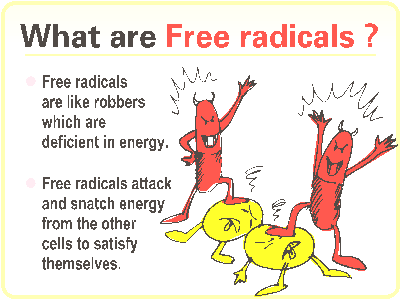free Radical

source : premoh.com
Reaction Intermediates
Short lived fragments obtained by homolytic & hetrolytic fission are called Reaction intermediates. The important reaction intermediates are free redicals, carbonium ion & carbanions.

source : www.2.chemistry.msu.edu
Free Radical
A free radical may be defined as an atom or group of atoms having an odd or unpaired election. These are obtained by the homolytic fission of covalent bond . Free radicals are denoted by putting a dot (.) against the symbol of atom or group of atoms.

The formation of free radical is initiated by heat, light or catalyst.
Free Radical : Characteristics
1) Free radicals are electrically neutral.
2) They are highly unstable.
3) They are highly reactive due to presence of odd electrons. In methyl free radical 7 electrons are present on its carbon . They readily try to pair up the unpaired electron.
4) Free radicals are para magnetic is nature.
5) Normally free radicals are formed in the presence of sunlight & when the reactants are in gaseous state.
6) The stability order of free radicals are as follows-
Benzyl > Allyl > Tertiary >secondary >Primary
7) It shows sp2 hybridisation

source :gorilao.com.br
Difference between free radicals & ions
| Free radical | ions |
| 1. These are neutral in nature.
Example :
|
1. They carry either positive or negative charge.
Example :
|
| 2. One unpaired electron is present in valence shell. | 2. Paired electrons are present in valence shell. |
| 3. They are para magnetic in nature. | 3. They are dia magnetic in nature, |
| 4. These are formed by homolytic fission of covalent bond. | 4. These are formed by heterolytic fission of covalent bond. |







